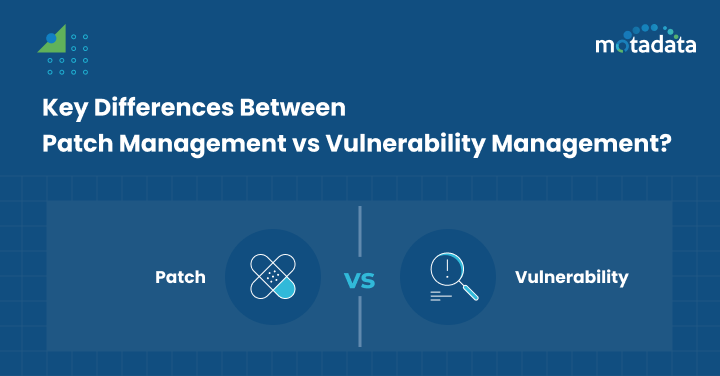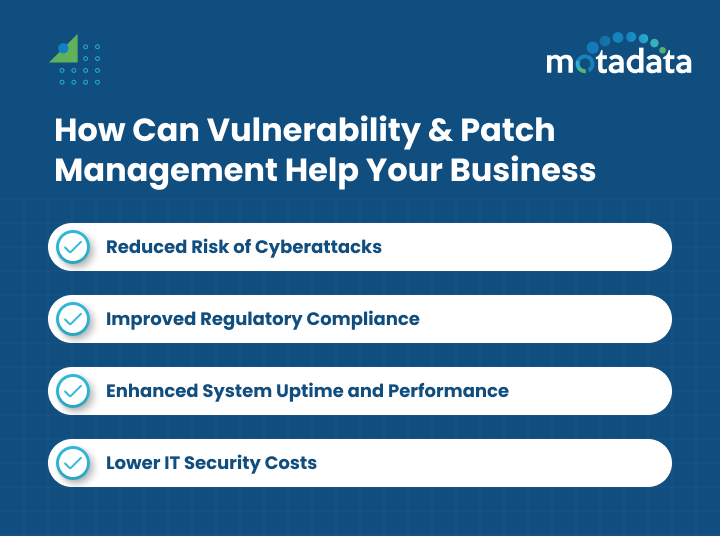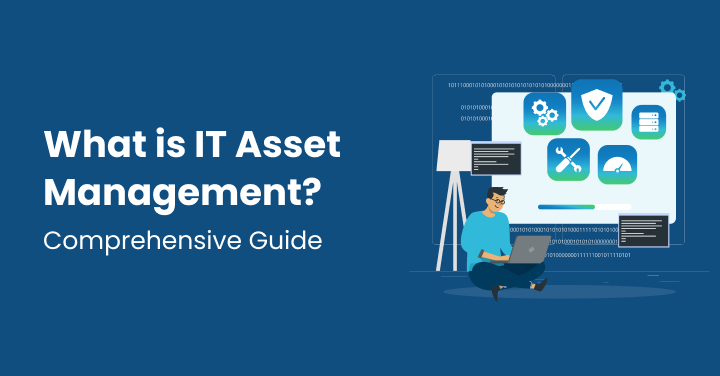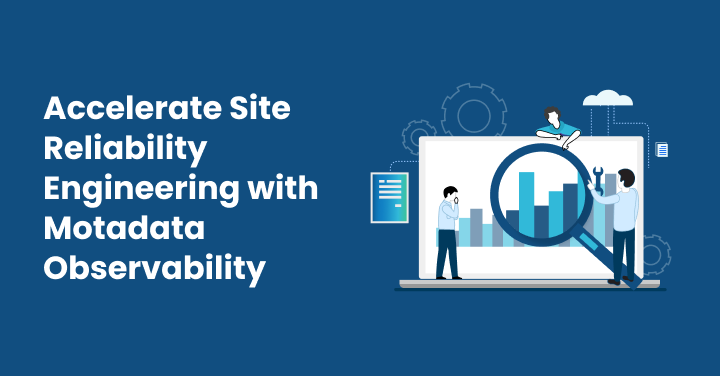The evolution of the digital era and introduction to new technologies has completely changed the business dynamics. Over the past few years, we have constantly noticed dramatic transformations in cybersecurity. In 2023, around 72.7% of all enterprises worldwide were affected by ransomware attacks.
The count is expected to increase over time as today; almost every other business is using digital technologies to grow and expand. As a result, the risk of data breaches and threats is high.
Cybercriminals are constantly moving and adopting several other sophisticated techniques to target businesses and compromise security systems, resulting in huge financial losses and reputational damage. Even a minor hacking or breach can disrupt your performance and impact goodwill. Organizations must prioritize maintaining a robust security posture to combat such attacks and threats.
Patching and vulnerability assessment are two critical IT security practices that can contribute to maintaining integrity, data availability, and customer trust. With these practices, an organization can safeguard its data against cyber threats in real-time. Although both terms might be used interchangeably, they differ in various ways.
Let’s learn more about patch management and vulnerability management. We will then discuss how they differ and contribute to business security.
What is Patch Management?
Patch management implements software upgrades or patches to protect operating systems and applications against known vulnerabilities. These upgrades or patches include fixing security and bugs in the software, adding new features, and enhancing security. Under this process, regular scans are performed to identify missing patches and ensure quick deployment.
The primary goal of the patching process is to ensure that the entire IT infrastructure is up-to-date and capable of eliminating risks associated with known vulnerabilities. Identification, acquisition, testing, deployment, documentation, and reporting are the core functions of a patching process. When performed correctly, these functions enable organizations to allocate resources wisely, prioritize critical issues initially, and reduce their impact on the organization’s security posture.
It is an ongoing process that comes with various benefits to an organization, including:
- Improved Security Posture: Continuous scanning and software upgrades help close security issues and gaps that attackers can use as loopholes.
- Reduced risks: Allows organizations to fix vulnerabilities and prevent possible threats and breaches quickly.
- Enhanced System Stability: These practices include bug fixes that can improve software performance as well as ensure overall system stability
- Compliance: Effective Patching procedures assist firms in complying with legal obligations and staying out of trouble.
What is Vulnerability Management?
Vulnerability management is a proactive approach that involves identifying, assessing, reporting, and remediating security vulnerabilities across the entire IT infrastructure. Did you know that half of the high-risk vulnerabilities found in 84% of businesses could be fixed with a straightforward software update? Yes, it’s that simple.
Organizations can quickly identify vulnerability risks by running vulnerability assessments and taking corrective measures before they impact performance. It is a broader approach used to identify vulnerabilities before they cause disruptions in the system. If not found and fixed, vulnerabilities provide opportunities for cybercriminals to use in their attacks. These gaps may result in ransomware threats, data loss, theft, and other hazardous cyberattacks that seriously harm a company’s brand.
Identification, classification, prioritization, remediation, reporting, and monitoring are the core functions of this process. When performed correctly, these functions enable IT teams to discover vulnerabilities and remediate issues. It is not a one-time process but demands constant scanning, vulnerability analysis, and remediation to minimize breaches and risks.
There are different types of vulnerabilities that you can address using this approach, such as:
- Software Bugs: Errors or bugs in software code that an attacker can use against you.
- Configuration Flaws: Security loopholes due to incorrect configuration settings
- Network Vulnerabilities: Vulnerabilities in the architecture or operation of the network that could allow unauthorized access.
- Hardware Vulnerabilities: Hardware components with vulnerabilities in firmware or physical components
Organizations must be vigilant to safeguard their systems against new threats since new vulnerabilities are consistently found. A strong vulnerability management solution can help an organization lower its exposure to possible security breaches by staying proactive in detecting and resolving vulnerabilities.
What are the Key Differences Between Patch Management vs Vulnerability Management?
Categorization, Monitoring, and Verification are the three lifecycle steps similar to those of patch management and vulnerability management. However, the two approaches differ in various other areas.
Let us discuss how patch management vs vulnerability management differ.
Focus:
Patching is a reactive process in which, after identifying or detecting vulnerabilities, software updates, and patches are instantly released by the software vendor promptly. Since new vulnerabilities often appear, patch management solutions help shield IT systems from exploitation.
Vulnerability management, on the other hand, is a proactive process under which potential security weaknesses are identified and mitigated before the attacker misuses them. Under this approach, constant scanning, risk assessments, and remediation efforts are made to reduce the attack surface. Further, vulnerability management is a broader concept of security measures beyond patching.
Scope:
Patching is finding, evaluating, and applying vendor-provided software updates or patches to address known vulnerabilities. With a more comprehensive focus, the vulnerability assessment process addresses identifying, evaluating, and prioritizing security flaws in an organization’s IT environment.
Process:
The patching system includes acquiring, testing, and deploying patches, whereas the vulnerability assessment system includes identification, classification, prioritization, and vulnerability remediation.
The Role of AI in Patch Management vs Vulnerability Management
Artificial Intelligence (AI) is revolutionizing patch and vulnerability management processes and several other aspects of IT security. By implementing AI practices, an organization can streamline its processes and enhance the efficiency and speed of threat detection.
Applications of AI
Automated vulnerability scanning and prioritization:
With the help of AI incorporation, all the scanning processes will be automated. As a result, organizations can discover vulnerabilities much faster. Further, depending on the potential impact, IT teams can prioritize vulnerabilities and address the important ones early.
Machine learning for patch compatibility testing:
Artificial intelligence (AI)-powered machine learning models can forecast whether updates will work with current systems, lowering the chance of problems and guaranteeing more seamless deployments.
Predictive analytics for identifying emerging threats:
With AI, professionals can identify and track patterns and trends to forecast future threats. In short, the insights collected initially can help organizations take corrective measures before they impact performance and operations. Organizations may improve their security posture and keep one step ahead of hackers by utilizing AI’s ability to predict possible risks and vulnerabilities.
Further, on the one hand, AI will help process large data volumes quickly and reduce false positives. On the other, it comes with a few challenges that can make it difficult for some users to operate. For example, your IT team members or project managers must have specialized knowledge and skills in implementing AI solutions, which can be complex. Secondly, the AI method is expensive and requires quality data for accurate results.
How Do Patch and Vulnerability Management Work Together?
When integrated, patch management and vulnerability management offer an integrated security approach. They are complementary techniques. Despite having different goals and procedures, they must work together for efficient IT security.
The main goal of patching systems is distributing software updates, primarily patches, to fix known vulnerabilities. This guarantees that the organization’s systems have installed the most recent feature updates and security patches.
By routinely installing updates, organizations can lower the attack surface and risks associated with known vulnerabilities. Conversely, a vulnerability assessment system involves identifying and resolving potential threats, even for which a fix may not exist.
It adopts a proactive stance by regularly scanning the company’s systems to find potential vulnerabilities and rank them according to severity. Organizations that wish to address vulnerabilities that patching systems alone might not be able to solve can benefit from vulnerability management’s broader perspective on security threats.
For the patch management and vulnerability management systems to function together, vulnerabilities must be reported to the former by the latter. The patch management system then applies the relevant patches to fix these vulnerabilities.
The organization’s systems are safeguarded against known and new risks by continuing this procedure. Also, patching is not a solution for every vulnerability. To ensure a comprehensive approach to security, vulnerability management may recommend other remediation options.
The security team plays a crucial part in patch and vulnerability management by supervising the entire procedure. They monitor the company’s systems, organize vulnerability scans, set remediation priorities, and ensure security fixes are applied on time. By working together, the security team may successfully reduce the risks provided by threat actors and sustain a robust security posture.
How Can Vulnerability and Patch Management Help Your Business
Businesses may benefit by implementing strong patch and vulnerability assessment procedures, improving their security posture and productivity. Here are a few advantages of implementing these practices for businesses, such as:
Reduced Risk of Cyberattacks:
By running regular scans and tracking system status, businesses can identify and address vulnerabilities much earlier. Similarly, with patching, you can close security gaps by applying software upgrades promptly. The team can use the insights and patching system to lower the risk of data breaches and cyberattacks, protect sensitive data, and maintain system integrity.
Improved Regulatory Compliance:
Organizations must adhere to various legal frameworks, such as GDPR, HIPAA, and PCI-DSS, which mandate efficient assessment procedures. Following these procedures helps companies stay in compliance and avoid trouble. Furthermore, showcasing a commitment to strong security procedures can improve an organization’s status and foster confidence among clients, associates, and authorities.
Enhanced System Uptime and Performance:
Keep your system and processes up-to-date to ensure better performance delivery. Further, continuous software patching and vulnerability remediation may assist organizations in reducing their downtime, improving system stability, and improving overall user experience.
Patches will help fix security flaws and improve system functionality. On the other hand, proactive vulnerability management contributes to increased system uptime and reliability by preventing disruptions from cyberattacks.
Lower IT Security Costs:
The fewer security incidents your organization faces, the more it can save on unnecessary expenses. Further, by taking timely proactive measures, organizations can prevent security incidents and avoid maintenance and other costs that might arise after a breach session.
Businesses can cut overall IT security expenditures by decreasing the frequency and severity of security events through strong patch and vulnerability management policies. Implementing proactive practices can lead to more efficient resource allocation, as IT teams can concentrate on averting problems instead of responding to emergencies.
Conclusion
The patching process focuses on upgrading software and fixing known issues as a vulnerability is identified. The other process is a broader concept that performs continuous monitoring to identify and mitigate security threats. Patch Management vs Vulnerability Management might be similar in different stages but have distinct processes and purposes.
With the introduction of AI technology, these practices and their use can be further enhanced. Organizations can use AI practices to improve efficiency, accuracy, and predictive capabilities. However, the intricacies and difficulties of AI must be carefully considered if it is to be implemented successfully.
Understanding patch management vs. vulnerability management and how using AI will help enhance cybersecurity efforts is necessary. Further, businesses may integrate vulnerability and patch management to secure their networks more effectively, lower their risk of cyberattacks, and maintain regulatory compliance.
In addition to safeguarding private information and network infrastructure, these procedures save costs and improve operating effectiveness. Several tools, like Motadata, are available in the market and comprise patching capabilities. With the help of these AI-driven tools and best practices, organizations can safeguard their data against evolving cyber threats.
Patch management software enables organizations to eliminate potential security holes by automatically installing patches. Maintaining a secure IT infrastructure in today’s digital environment is not easy. You must invest in a proactive and comprehensive approach to protect IT systems from constantly changing cyber threats and guarantee their resilience and dependability.
FAQs:
Patch management focuses on applying updates to software and systems to prevent security breaches. Vulnerability management involves identifying, assessing, and mitigating security weaknesses.
The key distinction lies in proactive protection (patching) versus risk identification and resolution (vulnerability management).
Implementing regular vulnerability scans, prioritizing patches based on criticality, establishing a centralized patch management system, testing patches before deployment, and educating employees on the importance of timely updates are key practices for effective patch management strategies.









